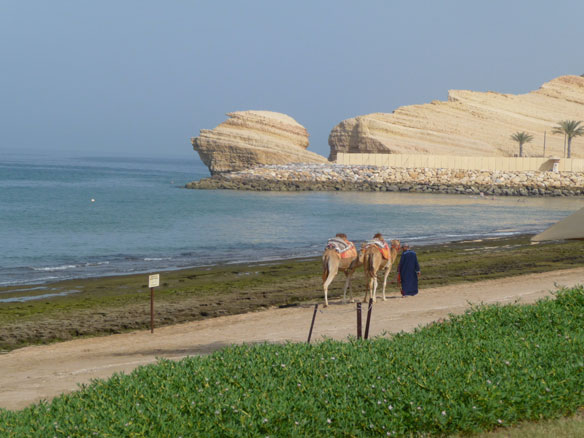Excerpts;
The world’s driest region, the Middle East and North Africa (MENA), is getting drier at an alarming rate. And yet, despite massive population growth (the Middle East’s population grew 61 percent from 1990 to 2010 to 205 million people) predictions of “water wars” have failed to materialize.
So how has a region that water experts say ceased to have enough water for its strategic needs in 1970 proved so resilient to water scarcity?
“Trade is the first means of being resilient; it’s the process that enables an economy to be resilient. The ability to trade effectively depends on the strength and diversity of the economy,” Anthony Allan from King’s College London and the School of Oriental and African Studies told IRIN.
That does not literally mean that countries import water directly; it is rather that because so much water is used, not for drinking, but for agriculture (around 90 percent), by importing food staples like wheat you are in effect importing water, something Allan calls “virtual water”.
As a result, the region’s growing population imports around a third of its food, a figure that shoots up in the Gulf states where arable land is negligible.
But while such resilience may “miraculously” solve extreme water scarcity and make life that exists today possible in the Middle East, it can create its own vulnerabilities; countries need economies that can generate enough foreign currency to pay for imports.
That may be easy in oil-rich countries with small populations like the United Arab Emirates (UAE) and Qatar, but it is far more difficult in places like Egypt, which struggles to find the reserves to pay for wheat imports for its 84 million citizens in a context of declining crude oil exports and a slump in tourism.
Such trade “resilience” is also largely unaffordable in a place like Yemen – the region’s poorest country, which has 25 million people in an extremely water scarce (and hence food scarce) environment. Each Yemeni only has access to about 140 cubic metres of water annually and the capital, Sana’a, is on track to be the first in the world without a viable water supply.
An uncertain future
While trade, an abundance of historically cheap food on international markets, and for some oil – sold at high prices – have combined to create an unexpected resilience in the face of water scarcity, such lessons may not travel well in the developing world. Trade may have reduced dependency on local water supplies, but it has shifted dependency to international markets and exposed people to fluctuating world prices.
A recent study of NASA satellite data published last month found that parts of Turkey, Syria, Iraq and Iran along the Tigris and Euphrates river basins had lost 144 cubic kilometres of water from 2003 to 2009, roughly equivalent to the volume of the Dead Sea.
With scientist predicting an increase in extreme weather events, adaptability has become increasingly important…
NASA Satellites Find Freshwater Losses in Middle East, NASA
A new study using data from a pair of gravity-measuring NASA satellites finds that large parts of the arid Middle East region lost freshwater reserves rapidly during the past decade.










